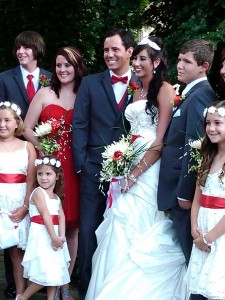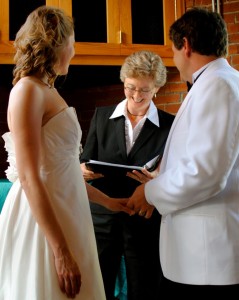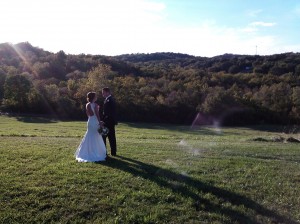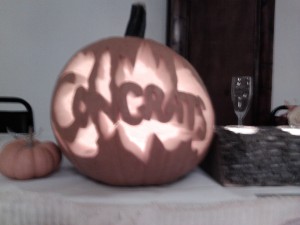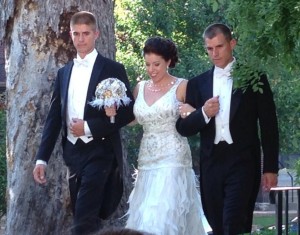Thinking About Children and Weddings
Weddings ceremonies are usually designed by adults with adults in mind. And yet many times we include children, most often in the opening rites as Flower Girls and Ring Bearers. In my life, before I was a Celebrant, I never gave this practice a second thought. Now that I have officiated at nearly 600 weddings, I’ve been giving children in ceremonies a fresh look.
Just to clarify: This is not about including children in the ceremony when the couple is bringing children from earlier relationships into the new marriage. That’s a blog piece for another time. Instead, this is about the roles we often assign a child or children which are really unnecessary to the ceremony but are more often for the “cute factor.”
Along with most adults, I have enjoyed those moments in a wedding when happy children walk up the aisle carrying a pillow with rings attached, spreading flower petals on the floor, pulling a wagon, or carrying a sign that says variations of, “Here comes the bride!” When the child is enjoying herself or himself, we smile along with them and encourage them.
But what about those times when it does not go so well? Perhaps he or she is shy and uncomfortable walking up the aisle with a lot of adults staring at them. (Actually, I cannot tell you how many couples tell me the same thing about their discomfort with being the center of attention on their wedding day!) Maybe his clothes are itchy, her new shoes are too tight, or he is missing his nap time. Most children have not yet refined their ability to ignore such discomforts in public, so in their raw honesty, they register their distress for all to see.
Of course, it helps to remember that children see the world differently than adults, too. There was the little guy who kept wondering when he was going to get his “Ring Bear” costume, who was so looking forward to dressing up as a bear for the day. And then there was the Flower Girl who kept walking up and down the aisle, sincerely believing that her job was to empty the entire basket, one petal at a time. I think it was the bride who nearly melted down that day, waiting for the flower girl to finish! 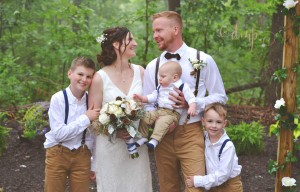
So why do we include children in something that they really don’t understand and then expect them to behave like little adults for a day? Heck, half of the actual adults in attendance don’t really understand what we are doing in the ceremony, either! I cannot count the number of meltdowns I have seen in exhausted little ones. Not to mention their parents who appear to be barely hanging on, some of whom are also in the wedding party, which has a whole other set of stressors. And I’m pretty sure that what I see at rehearsals and at the ceremony is only the tip of the iceberg.
What is my point? I know that couples have lots of things to consider when populating their wedding party. Family politics are often a factor, as well as your love for the children being considered as potential Ring Bearers, Flower Girls, etc. I am simply suggesting that you think about giving the children you love so dearly (as well as their parents) a break by NOT including them in your wedding party. If you want to invite them as guests, go for it. If you want them to feel special as your guests, provide activities for them like coloring books, bubbles, and the like. There is no shortage of ideas to be found online that can help you show hospitality to the children in your life so that they might enjoy your wedding day a little more on their own terms.
If you choose to include children in your wedding party, give them a wide berth to just be themselves that day. Make their roles easy to understand and be prepared for anything! Let kids be kids as you celebrate your marriage.

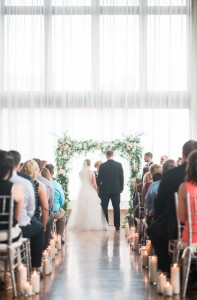

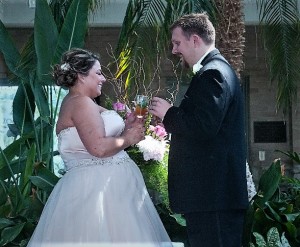
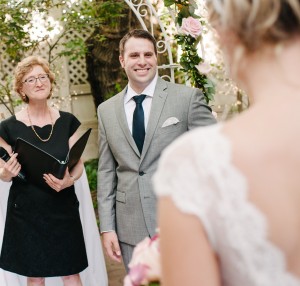 “Presentation of the Bride”
“Presentation of the Bride”